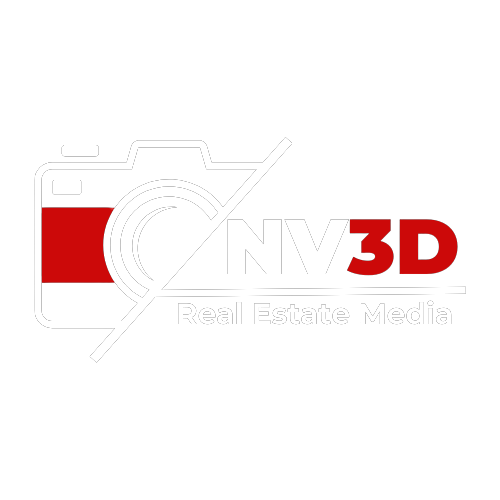Real Estate Photography
The Ultimate Guide to Real Estate Photography: How to Capture Stunning Property Photos
Why Real Estate Photography Matters
In today's highly competitive real estate market, professional real estate photography is essential to attract buyers and increase property sales. High-quality images create a strong first impression, engage potential buyers, and significantly impact how quickly a property sells.
Essential Equipment for Real Estate Photography
1. Camera Selection
A high-resolution DSLR or mirrorless camera is ideal for capturing clear and sharp images. Some of the best options include:
- Canon EOS 5D Mark IV
- Nikon D850
- Sony A7R IV
2. Wide-Angle Lenses
A wide-angle lens helps to showcase the full dimensions of a space, making rooms appear more spacious and inviting. Recommended lenses:
- Canon EF 16-35mm f/4L IS USM
- Nikon AF-S NIKKOR 14-24mm f/2.8G ED
- Sony FE 12-24mm f/4 G
3. Tripod
A sturdy tripod ensures stability and allows for long exposure shots, which are essential for indoor photography. Look for options like:
- Manfrotto MT055CXPRO4
- Gitzo GT3543LS Systematic
4. Flash and Lighting Equipment
To ensure well-lit images, use off-camera flashes, strobes, or continuous lighting setups such as:
- Godox AD200Pro
- Profoto B10
- Neewer 660 LED Panel
5. Drone for Aerial Shots
Drones provide stunning aerial views of properties, adding a dynamic perspective to listings. Popular choices include:
- DJI Mavic 3
- DJI Air 2S
- Autel Robotics EVO II
Real Estate Photography Techniques
1. Mastering Composition and Framing
Use the rule of thirds to create visually appealing images. Focus on showcasing spaciousness and natural light while avoiding clutter.
2. Optimal Camera Settings
- Aperture: f/8 to f/11 for sharpness
- ISO: 100-400 to reduce noise
- Shutter Speed: Adjust for proper exposure; longer exposures for interior shots
3. Natural Light vs. Artificial Light
- Maximize natural light by shooting during golden hours (morning or late afternoon).
- Use light reflectors and flashes to balance shadows in dimly lit areas.
4. HDR Photography for Interiors
HDR (High Dynamic Range) photography ensures a balanced exposure in rooms with both bright windows and darker interiors.
5. Vertical and Horizontal Lines Alignment
Ensure walls, windows, and furniture align properly to maintain a professional look.
Post-Processing and Editing Tips
1. Software for Editing
- Adobe Lightroom – Color correction, brightness adjustments
- Adobe Photoshop – Retouching and object removal
- Luminar AI – Quick enhancements and AI-powered editing
2. Color Correction and White Balance
Adjust white balance to maintain neutral and natural tones.
3. Sky Replacement for Exterior Shots
A dull sky can be replaced with a blue, vibrant sky using Photoshop or Luminar AI.
4. Removing Unwanted Objects
Remove distractions such as power lines, vehicles, or personal belongings to keep images clean and professional.
5. Image Resizing and Optimization
Optimize images for fast loading speeds on real estate websites by compressing without losing quality using tools like TinyPNG.
Real Estate Photography for Different Property Types
1. Residential Real Estate
Focus on capturing warm, inviting interiors and emphasize key selling points such as spacious kitchens, modern bathrooms, and luxurious living areas.
2. Commercial Real Estate
Showcase office spaces, retail shops, and warehouses with a focus on layout, accessibility, and potential business opportunities.
3. Luxury Properties
Highlight premium features like infinity pools, custom-built kitchens, panoramic views, and architectural design.
4. Vacation Rentals and Airbnb Listings
Create images that convey comfort and lifestyle appeal. Showcase amenities like cozy seating areas, outdoor patios, and scenic views.
Marketing and Selling Real Estate Photography Services
1. Building a Strong Portfolio
A high-quality portfolio is crucial for attracting clients. Include a diverse range of properties in your portfolio.
2. Social Media Promotion
Leverage platforms like Instagram, Facebook, and Pinterest to showcase stunning property images and engage potential clients.
3. Partnering with Real Estate Agents
Collaborate with top-performing real estate agents to become their go-to photographer for property listings.
4. Creating a Website for Your Photography Business
Optimize your website with SEO-driven content, blog posts, and an online booking system to attract more clients.
5. Offering Virtual Tours and 3D Photography
Stay ahead of the competition by providing Matterport 3D tours, virtual staging, and interactive floor plans.
Final Thoughts
Mastering real estate photography requires the right equipment, techniques, and post-processing skills. By investing in high-quality gear, refining your editing process, and marketing your services effectively, you can create stunning property photos that captivate buyers and boost sales.
